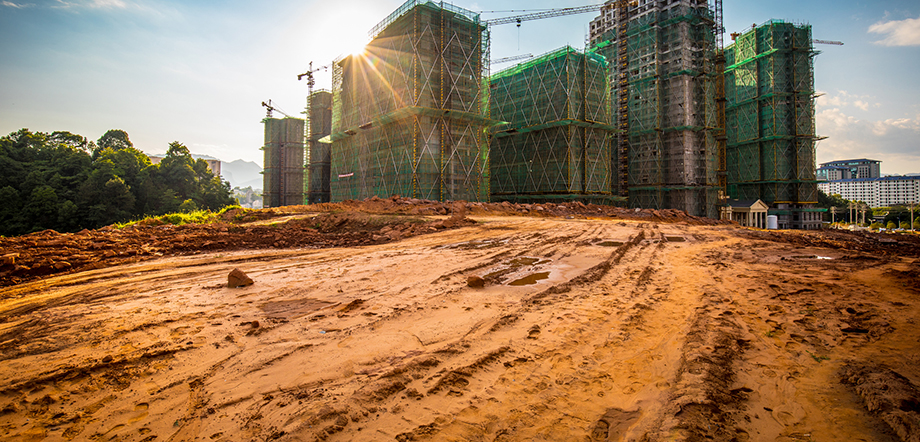Client Alerts
New Ohio Law Reduces Cost and Time for Environmental Cleanups
June 2020

Client Alerts
New Ohio Law Reduces Cost and Time for Environmental Cleanups
June 2020
On June 16, 2020, Ohio Governor Mike DeWine signed House Bill 168, which provides greater flexibility to manage environmental issues on commercial/industrial property. The bill will take effect on September 14, 2020 (90 days after the governor’s signature).
What Issue Does H.B. 168 Address?
The cost to clean up historical contamination at commercial/industrial properties has long been an impediment to reuse and redevelopment. This has been particularly true in Ohio where it is estimated there are approximately 10,000 properties with pre-existing environmental contamination.
In Ohio, the primary tool to address environmental contamination at commercial/industrial properties has been the Ohio Voluntary Action Program (VAP). While the VAP has been successful, in particular with regard to cleanup of industrial sites with heavy contamination, the VAP does not fit well with smaller or less-contaminated commercial/industrial properties. VAP issues and concerns include:
- Slow Process: Many real estate deals need to be completed in a few months or less. It can take from 90 to 180 days just to complete the VAP investigation (i.e., VAP Phase II) of the property. A full cleanup can take one, two, three, or even more years to complete.
- Costs: It can cost from $100,000 to $200,000 for a VAP Phase II investigation. Full cleanup can range from hundreds of thousands to millions of dollars. These costs act as a strong deterrent to entering the VAP program.
- Complexity: With approximately 90 guidance documents in addition to nearly 100 pages of rules, the VAP program is highly complex.
Due to these issues and concerns, the VAP has been used to address about 700 sites – only a small portion of the estimated 10,000 sites in Ohio – since its enactment in 1996.
Gap in Ohio Law Left Developers and Businesses with Limited Options
In 2002, the United States Congress, through passage of the federal Brownfields Act, created the “Bona Fide Purchaser Defense” (BFPD) as an amendment to CERCLA (a/k/a “Superfund”) to encourage redevelopment of environmentally contaminated property. Under the BFPD, a prospective buyer of property can establish a defense to environmental liability under CERCLA if the buyer performs environmental due diligence prior to purchase in accordance with U.S. EPA standards. The prospective buyer must not have any legal responsibility for the pre-existing contamination.
Following enactment of the BFPD, U.S. EPA adopted the “All Appropriate Inquiries” rule, which establishes the mandatory level of environmental due diligence a buyer must perform to qualify for the liability defense. If the due diligence (i.e., Phase I and Phase II assessments) identifies an ongoing release or risk to human health or the environment, the buyer must take “reasonable steps” to address those issues.
A key aspect of the BFPD is that “reasonable steps” does not mean full cleanup of the property. Rather, the goal is to make the property safe for reuse. In this manner, the BFPD offers a much more cost-effective means to putting brownfields back into productive use than do traditional full-blown cleanup programs such as the Ohio VAP.
Another benefit of the BFPD is that it does not require a formal application to EPA/Ohio EPA or regulatory signoff; therefore, the process can be completed much more quickly.
H.B. 168 Fills Gap in Ohio Law
While the BFPD exists to protect a buyer from liability under CERCLA – a federal law – for the past 18 years, it did not extend protection from liability under Ohio law. Prior to passage of H.B. 168, if a buyer performed “All Appropriate Inquiries” on an Ohio property, the buyer would receive no legal liability protection under Ohio law.
H.B. 168 fills this gap. It extends protection from liability under Ohio law for pre-existing “hazardous substances” contamination on property to buyers who take all the necessary steps to qualify for BFPD. By strengthening protections under the BFPD, buyers will have a greater incentive to reutilize commercial/industrial property in Ohio with pre-existing contamination.
Prior to passage, the Ohio Senate amended the bill so that the state liability protections are retroactive to January 11, 2002, consistent with the 2002 federal Brownfields Act; therefore, prior due diligence that met federal requirements now qualifies for the defense under Ohio law.
What Steps Are Needed to Complete the BFPD?
Typically, five steps need to be taken in order to complete the BFPD process:
- Step 1: Obtain an ASTM Phase I Environmental Assessment at least one year before taking ownership (after 180 days the Phase I assessment must be updated);
- Step 2: If the Phase I assessment is “clean” (i.e., it identifies no issues), no additional due diligence is necessary. If the Phase I assessment identifies potential releases of contamination (i.e., “Recognized Environmental Conditions” or “RECs”), then, typically, a sampling of the property should be performed (i.e., a Phase II environmental assessment);
- Step 3: Perform Phase II either before or after closing on the property. The scope of sampling should be tailored to the issues identified in the Phase I Report;
- Step 4: Based on the results of the sampling, a qualified environmental consultant will recommend “reasonable steps” to address any ongoing releases or exposures to human health/environment. Reasonable steps can include: limited soil excavation, maintaining parking lots or other barriers over soil contamination, steps to mitigate vapor intrusion into buildings, and other remedial measures. The reasonable steps should be incorporated into a “Continuing Obligations” plan to manage the environmental conditions at the site; and
- Step 5: Implement the Continuing Obligations plan.
Depending on the complexity of the issues identified in sampling, the entire BFPD process typically can be completed in as little as 30 to 90 days.
H.B. 168 provides developers and businesses a more efficient and cost-effective way of addressing pre-existing contamination on property. It is important to note that every property with environmental contamination is different, and each presents its own legal liability considerations. You should consultant with an environmental attorney to choose the right strategy to address potential liability.
Note: Joe Koncelik, author of this Client Alert, is a board member of the Greater Ohio Policy Center (GOPC), which champions brownfield issues. When GOPC began exploring ideas for advocacy in brownfield redevelopment, Joe proposed the concept of sponsoring a bill through which the State of Ohio would adopt the federal Bona Fide Purchaser Defense (BFPD). GOPC found a sponsor for the bill and worked with the Legislative Service Commission (LSC) to draft the language, and Joe worked with LSC, Ohio EPA, the Ohio State Bar Association, the Ohio Chamber, and NAIOP to resolve questions related to the bill. Ohio H.B. 168 represents more than two years of work by Joe, GOPC, and the State legislature to fill the gap in Ohio law, resulting in a significant reduction in cost and time to clean up environmental contamination on commercial/industrial property.
ADDITIONAL INFORMATION
For more information, please contact:
- Joseph P. Koncelik | 216.696.2373 | joseph.koncelik@tuckerellis.com
This Client Alert has been prepared by Tucker Ellis LLP for the use of our clients. Although prepared by professionals, it should not be used as a substitute for legal counseling in specific situations. Readers should not act upon the information contained herein without professional guidance.
